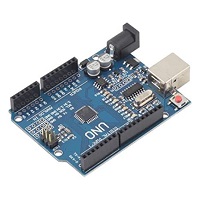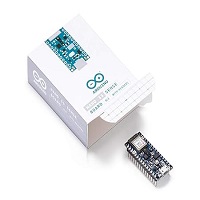Product Title: Arduino Uno R3 – Open-Source Microcontroller Board
Unlock the power of creativity with the Arduino Uno R3, a versatile and user-friendly open-source microcontroller board designed for makers, hobbyists, and professionals alike. The Arduino Uno is the perfect companion for anyone looking to dive into the exciting world of electronics and programming.
Key Features:
Open-Source Platform:
Embrace the spirit of innovation with the Arduino Uno’s open-source platform, allowing you to modify and expand upon the board’s capabilities to suit your project’s unique requirements.
ATmega328 Microcontroller: Powered by the robust ATmega328 microcontroller, the Arduino Uno delivers reliable performance for a wide range of applications, from simple LED projects to complex robotics.
Easy to Use:
Whether you’re a beginner or an experienced developer, the Arduino Uno’s straightforward design makes it easy to get started. The user-friendly integrated development environment (IDE) simplifies programming, making it accessible to everyone.
Expandable I/O Ports:
With 14 digital input/output pins and 6 analog pins, the Arduino Uno provides ample connectivity for sensors, actuators, and other electronic components, allowing you to bring your ideas to life.
USB Connectivity:
The built-in USB interface facilitates easy communication between your computer and the Arduino Uno, enabling hassle-free programming and data transfer.
Wide Range of Libraries:
Take advantage of a vast library of pre-written code and libraries that simplify complex tasks, reducing development time and accelerating your project’s progress.
Versatile Applications:
From home automation and wearable technology to interactive art installations and beyond, the Arduino Uno is a versatile platform that can be adapted to suit a multitude of creative projects.
Technical Specifications:
Microcontroller: ATmega328
Operating Voltage: 5V
Input Voltage (recommended): 7-12V
Digital I/O Pins: 14 (of which 6 provide PWM output)
Analog Input Pins: 6
Flash Memory: 32 KB (0.5 KB used by bootloader)
SRAM: 2 KB
Clock Speed: 16 MHz
- What is the Arduino Uno?
- The Arduino Uno is an open-source microcontroller board designed for easy prototyping and development of electronic projects. It is widely used in the maker and DIY communities.
- What is a microcontroller?
- A microcontroller is a small computer on a single integrated circuit (IC) that contains a processor core, memory, and programmable input/output peripherals. It is used to control other components and devices in electronic systems.
- How do I program the Arduino Uno?
- You can program the Arduino Uno using the Arduino Integrated Development Environment (IDE). The IDE uses a simplified version of C/C++ programming language. Connect the Arduino Uno to your computer via USB, write your code in the IDE, and upload it to the board.
- What language does Arduino use?
- Arduino programming is typically done using a simplified version of C/C++. The Arduino IDE provides a user-friendly interface for writing and uploading code to the Arduino board.
- Can I use the Arduino Uno for both digital and analog projects?
- Yes, the Arduino Uno has both digital and analog input/output pins. You can use digital pins for tasks like turning LEDs on and off, and analog pins for reading analog sensor values.
- How is the Arduino Uno powered?
- The Arduino Uno can be powered via the USB connection to a computer or an external power source connected to the power jack. It operates at 5 volts.
- What are shields, and can I use them with the Arduino Uno?
- Shields are add-on boards that can be plugged into the Arduino Uno to extend its capabilities. They can add features like Wi-Fi, Bluetooth, motor control, and more. The Arduino Uno has a standard shield form factor, making it compatible with a wide range of shields.
- What is the difference between the Arduino Uno R2 and R3?
- The R3 version of the Arduino Uno introduced some improvements, including an additional I2C pin (for better compatibility with shields), a reset circuit, and a change in the placement of the power jack. The R3 is the most commonly used version.
- Can I use the Arduino Uno for commercial projects?
- Yes, you can use the Arduino Uno for commercial projects. However, for mass production, you might want to consider using the Arduino platform as a prototyping tool and then moving to a custom-designed board for production.
- Where can I find tutorials and documentation for Arduino Uno projects?
- The official Arduino website (arduino.cc) provides extensive documentation, tutorials, and a supportive community. Numerous online resources, forums, and books are also available to help you get started and advance your Arduino skills.



